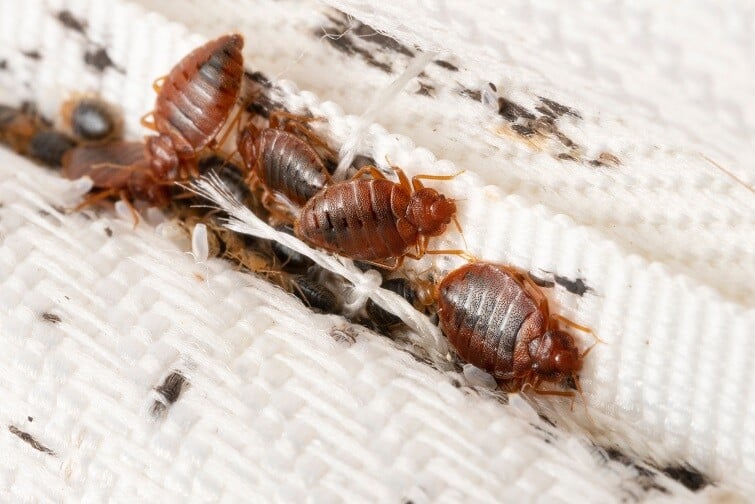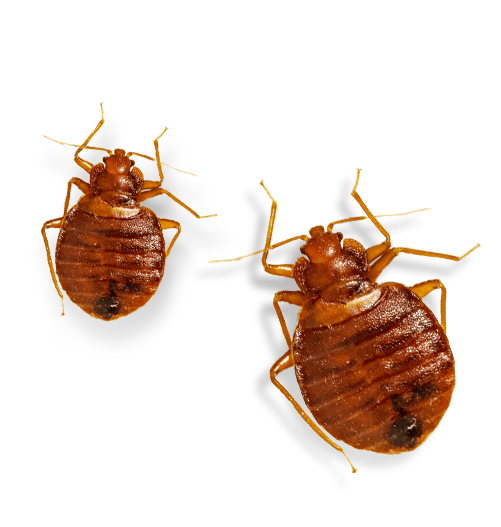Checking Out the Science Behind Bed Insect Warmth Treatments as a Sustainable Bug Management Method
In the realm of insect monitoring, the quest for lasting and reliable solutions stays a consistent pursuit. One such technique that has actually gained traction in the last few years is using heat treatments to deal with bed bug invasions. By utilizing the science behind thermal fatality factors for these relentless insects, warm therapies offer a promising option to typical chemical-based approaches. The complexities of exactly how warmth properly removes bed bugs and the wider ramifications for sustainable bug administration techniques make this a subject worth discovering better.
Bed Insect Heat Therapy Refine

Thermal Fatality Point for Bed Bugs
Exposing bed bugs to elevated temperature levels beyond their thermal tolerance range is essential for achieving effective obliteration in warm therapy procedures. The thermal death point for bed pests refers to the temperature at which these pests can not endure. Research study shows that bed bugs begin to perish when revealed to temperature levels above 113 ° F(45 ° C) for a sustained duration. As the temperature level enhances, so does the mortality price of bed insects. At around 118 ° F(48 ° C ), bed bugs start to pass away rapidly, with a mortality price of virtually 99% within minutes of direct exposure. This shows the sensitivity of bed insects to heats and highlights the effectiveness of warm treatments in eradicating invasions. By reaching and preserving temperature levels above the thermal fatality point for bed bugs, pest management specialists can make sure extensive removal of bed insect populaces, including hard-to-reach locations where chemical treatments might be less efficient. Understanding the thermal death factor for bed insects is important for applying successful warm treatment methods and attaining sustainable bug management results.
Advantages of Warm Treatments
Having actually developed the critical thermal fatality point for bed insects, it is crucial to now explore the substantial advantages that heat therapies supply in successfully eliminating these durable parasites. When compared to standard chemical methods, warm therapies present numerous crucial advantages. One of the main benefits is that heat can permeate deep right into splits and holes where bed insects hide, ensuring that even the most hard-to-reach areas are heated up to lethal temperatures. This thorough method not only eliminates live insects but likewise targets bed insect eggs, protecting against future infestations.
Furthermore, heat therapies are safe and eco pleasant, making them a sustainable parasite administration method. Unlike chemical pesticides, warm treatments do not leave damaging deposits that can position risks to human health and wellness or the setting. This aspect is especially crucial in delicate atmospheres such as healthcare facilities, schools, and suburbs where chemical usage may not be desirable.
In addition, warmth therapies have a high success price in eliminating bed bug infestations in a solitary therapy, lowering the demand for multiple gos to and reducing interruption to owners. This performance not just conserves time and cash yet additionally gives comfort to those dealing with bed bug Homepage problems.
Effectiveness of Warmth Therapy

Research researches have regularly shown the effectiveness of warm therapies in attaining a high rate of bed insect death. Properly carried out warmth therapies can reach all the fractures and gaps where bed bugs may be harboring, making sure an extensive technique to elimination. Warmth treatments have the added benefit of killing bed pest eggs, which are commonly immune to traditional chemical treatments. On the whole, the effectiveness of heat treatments in eradicating bed bug infestations makes them a sustainable and dependable insect management strategy.
Sustainable Pest Monitoring Perks
Executing lasting pest administration techniques offers long-lasting advantages for both the environment and public health and wellness. By using approaches such as heat treatments for bug control, we can reduce the reliance on damaging chemical pesticides that can have unfavorable impacts on ecological communities and human health - DC exterminator. Lasting parasite monitoring strategies help in protecting biodiversity by targeting certain parasites without damaging non-target microorganisms, consequently keeping a well balanced ecological community
Additionally, sustainable pest management practices contribute to the overall health and well-being of the general public. By decreasing direct exposure to toxic chemicals made use of in traditional parasite control methods, warm therapies supply a much safer alternative for insect administration in residential, business, and public areas. This reduction in chemical use likewise helps in preventing chemical residues from infecting dirt, air, look what i found and water, protecting ecological high quality.
Conclusion
To conclude, bed insect heat treatments have actually been revealed to be a lasting and effective parasite administration strategy. The thermal death factor for bed bugs makes them at risk to warm therapies, which have various benefits over conventional chemical therapies. The performance of heat treatments in removing bed bug invasions while minimizing environmental influence highlights the potential of this method as a sustainable remedy for pest control.
The bed insect warm treatment process includes elevating the temperature level within plagued areas to a level that successfully removes bed pests and their eggs. By reaching and maintaining browse around this site temperature levels above the thermal death point for bed bugs, insect administration experts can make sure comprehensive elimination of bed bug populaces, consisting of hard-to-reach locations where chemical therapies may be less effective. One of the primary benefits is that warmth can pass through deep right into gaps and fractures where bed pests conceal, ensuring that even the most hard-to-reach locations are heated up to deadly temperature levels. Unlike chemical treatments that may leave behind resistant populaces, heat treatments offer a ecologically pleasant and non-toxic service that can penetrate deep right into furnishings, wall surfaces, and other hard-to-reach areas where bed pests hide.
The thermal fatality point for bed bugs makes them at risk to warm treatments, which have numerous benefits over standard chemical treatments.